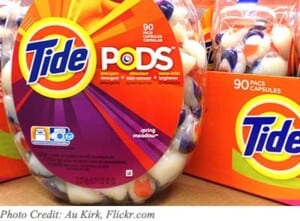Are your plants jeopardized by a short growing season and the possibility of frost just about any time of the year?
That’s the situation we face in Montana where Planet Natural is based. To avoid an Old Man Winter shakedown that wreaks-havoc on your garden in the early spring or late fall, consider playing our organic gardening based version of the popular television game show Jeopardy! There are no expensive prizes or cruises to win, but you’ll learn a lot and find ways to extend the seasons for your plants.
1. Season Extenders for $500 anyone?
Here’s a list of phrases. Reply with a question that the phrase “answers.” After you’ve played, we have a score card at the end so you can see how you did. All the questions have to do with the topic of plant protection and offer ways to prolong the growth season for your plants. Good luck, Contestants!
2. Early spring and late fall are the seasons for this.
What are the seasons when you need to protect plants from frost?
3. Structures that are relatively inexpensive and simple to build and which help protect plants during cold weather.
What are cold frames, Greenhouse Buckets or hot beds? (Any example is acceptable.)
4. Fuel source for cold frames and sun boxes.
What is the sun?
5. Fuel source for hot beds.
What are soil-heating cables, steam-carrying pipes or manure enriched with straw. Regardless of source, the fuel is buried beneath the plant’s root zones.
6. Primary building material for cold frames and sun boxes, which lets the sun shine in and warm up your plants.
What are transparent materials such as clear plastic, glass or fiberglass which collects heat when the sun shines. (Learn how to build a cold frame here.)
7. The “right” exposure for a cold frame.
What is southern or southeastern exposure? (A southern or southeastern exposure ensures the most daylight penetrating the cold frame. A slight slope is also good for drainage.)
Note: If you partially bury the cold frame into the ground, you’ll get better insulation.
8. Name a way to convert a cold frame into a hot bed. Either is acceptable:
What is digging out the cold frame and adding fresh horse manure, which releases methane and warms the soil? What is digging down and laying electric cable to create an “electric blanket” for the plants?
9. A quick and easy way to add insulation when temperatures drop into the teens or low 20s.
What is using natural burlap and leaves, hay bales, or blankets around the cold frame?
10. The temperature at which you should ventilate your cold frame to avoid overheating your plants.
What is 45˚F or above? (The cold frame’s sash should be raised partially at those times to avoid the build up of excess heat. The sash should be lowered before the sun sets to conserve some heat for the cold evening hours.
11. The process of placing seedlings started outdoors into a cold frame or greenhouse to help them adjust to cooler outdoor temperatures.
What is known as hardening off?
12. Vegetables that can be planted in a cold frame.
What is leaf lettuce and spinach? Other vegetables that do well in cold frames include, radishes, green onions, finger carrots, chard, endive and other greens.
13. Portable structures, which hold water, and offer plants protection from the elements.
What is a Wall O’ Water? Lightweight, portable and reusable, these water-filled plastic “teepees” are temporary structures that protect individual plants. They trap solar radiation and moisture evaporating from the soil and plants.
14. Season extenders made of materials such as perforated polyethylene and spun-bonded polyester that can be laid directly on top of plants.
What are floating row covers? Tuck the edges of the cover into the soil on either side of the row, allowing enough slack to allow the plants to grow. Be sure to remove the covers when it gets too warm, or before the plants need to be pollinated (row covers keep out pollinating insects as well as many garden pests and problems).
15. Pliable materials used to make hoops for supporting plastic tunnels.
What is fence wire, green saplings, small diameter plastic pipe, and stiff wire? (The lower the tunnels are, the more secure the covers will be.) Keep the ends open on warm days to allow for ventilation and tuck them in when it gets cooler.
Tip: On a raised bed you can attach pipe brackets to the inside and slip the hoops right in.
16. Amount plastic tunnels raise nighttime temperatures.
What is 4 to 5 degrees? You can double this number by draping old comforters or blankets over the top. Or triple the protection by adding black water bottles, which release stored daytime warmth after the sun goes down.
Scoring – Number of correct responses:
0-3 – Needs work. Hopefully, you’ve increased your knowledge by taking this quiz.
4-6 – Not bad. Not a budding botanist, yet, but you’ve done some research.
7-9 – You’re not a shrinking violet when it comes to knowing about season extenders.
10 or 11 – Wow. Your plants must be proud of you.












